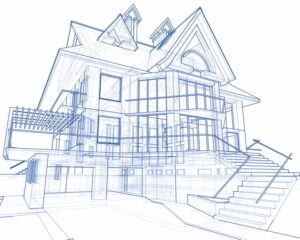As a roofing contractor, we know that most people only think about their roof when something has gone wrong with it and they really need it. We’re always ready to deliver any roofing service in Pearland, TX our customers may need, and deliver it fast. But we also want to educate our customers when possible so they can catch problems early and avoid bigger troubles later on.
In that spirit, we’re going to talk about two important parts of your roof today, parts that are hidden under the upper layer of shingles, or metal, or tile. We’re going to look at the plywood and underlayment.
What is roofing plywood?
Roofing plywood, which is also called the roof sheathing or decking, is the support base for the roof. A roof is heavy, so a home must have a foundation for it to provide structural support. There are two common types of plywood used in roofing: Oriented Strand Board (OSB), which is the less expensive option and is more resistant to moisture, and CDX (C-D Exposure) plywood, which is more durable and tends to last longer.
What is roofing underlayment?
Beneath the surface material of your roof (such as shingles) is the roofing underlayment. It’s installed directly onto the roofing plywood, which is why roofing contractors often talk about the plywood and the underlayment as a unit. The underlayment is a second layer of protection against the effects of the weather: water, wind, debris, etc.
There are different types of underlayment. For many years, felt was the most common, and it’s still sometimes used today. However, synthetic underlayment and self-adhered underlayment have become more popular modern options. The type of underlayment that best suits your home depends on several factors. Synthetic underlayment is lightweight, tough, and tear-resistant. Self-adhered underlayment is the most effective for severe weather conditions.
Watch for Signs of Damage to Roofing Plywood & Underlayment
You can usually spot signs of damage to shingles and tiles with a quick visual inspection of your roof after a storm. It’s a bit trickier to notice damage to what’s under the surface—so below we’ve listed several of the more common indicators of roofing plywood and roofing underlayment damage:
- Visible Water Stains: If you see water stains on your ceiling or in the attic, it can mean a leak originating from damaged roofing components.
- Sagging or Uneven Roof: If your roof appears uneven or sags in certain areas, it may be a sign that the plywood of the roofing is seriously damaged.
- Curling Shingles or Tiles: Curling or buckling tiles can either be damage to tile, or problems with the material right beneath it.
- Mold or Mildew Growth: If moisture becomes trapped between the layers, it can lead to mold or mildew growth. If you notice mold on the roof, it’s a good reason to have a roof inspection.
Replacing Plywood and Underlayment
If your roof has suffered from extensive water damage because of the weather, repairs have become commonplace, or the roof is extremely old, you may need to have the plywood or underlayment replaced. The best way to learn for certain is to schedule a roofing inspection with our team. We work extensively with all types of underlayment and decking, and we know exactly what to look for. We’ll give you the assistance you need to make the best choice.
Trust to Reign Roofing for all your roofing needs in the Sugar Land area. We’re Redefining the Roof Buying Process!

